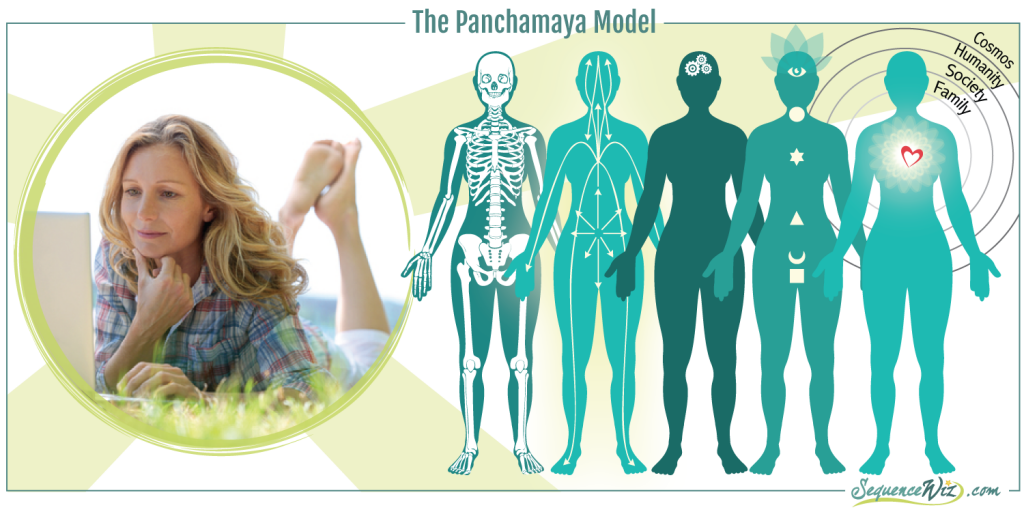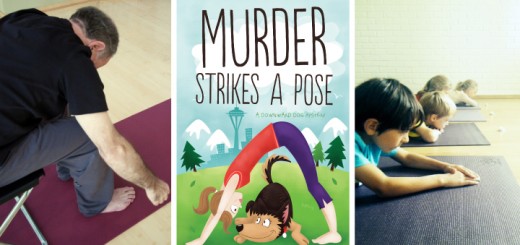Discovering the yoga of writing, Part 2
2Discovering the Common Ground between Yoga Practice and the Writing Process
Shortly after my relationship to writing begand to mend, I found another yoga teacher who taught me the deeper, more complete teachings of yoga, including a wider range of tools, techniques, methods, and practices. He introduced me to the work of the great sage Patanjali, who collated the ancient teachings on yoga into the Yoga Sutra. Central to these teachings is the insight that when we identify with things that change, including ideas and identity, such as being a writer, we suffer. For the first time, I began to understand, on a visceral level, that my identification as a writer brought with it a host of ideas, expectations, and judgments that ultimately led me down roads filled with distractions and other obstacles that had little or nothing to do with the act of writing. What relief to realize that I was not a writer and that I could not only choose to keep writing but help and encourage others to do the same.
This teacher taught that yoga was a contemplative practice of meditation, that is, the ability to focus the mind on a single point and to sustain that focus over a period of time. The transformational power of the practice lay in steady, consistent personal practice that is driven by intention, inquiry, and honest self-reflection and that leads to detachment—that is, an ability to let go of everything, even the practice itself and the results of practice in the service of realizing our true nature as pure awareness and living a meaningful and purposeful life with greater presence. I began to see common ground between the practice of yoga and the practice of writing. That ground was the mind, and a practice that’s borne out of intention and shaped by inquiry and self-reflection to train the mind to focus and sustain concentration on a single point.
The part about detachment and realization with respect to the writing process eluded me for the longest time. I sort of got it with respect to yoga practice, but how could that happen with a piece of writing? Detachment sounded like not caring, and how could one not care about something one created? And what was to be realized around something written? This topic could be an entire blog post all its own, but for now I will share the insight that came to me: Detachment in the writing process is an attitude of respect and right relationship to what is emerging in the writing; one of allowing and accepting that enables something authentic and true to manifest.
Here’s a very simple analogy: If in posture practice, we attempt a posture based on an idea of its form or what it should look like without respect to its function or to what our bodies need or can do, we run the risk of injury (and thus mental agitation) due to forcing our bodies to do something they’re not ready to do or can ever do. As a practitioner, I need to understand the posture and its function and the purpose it serves in my practice on any given day in any given practice for it to have a quieting affect on my body. The same risk of forcing and “injury” applies to an idea about which we’re writing. When we don’t practice respect and right relationship to it, we risk mangling or torturing it into submission, which distorts it and decreases the likelihood that what emerges is authentic and true. Rather than leaving the mind quieter in the process of writing, the mind becomes agitated, disrupting focus, concentration, and the ability to see clearly the idea before us and to get our writing work done.
Experiencing Yoga through the Multi-Dimensional Self
The teacher I began studying with also explained how the ancient yogi-s understood that we experience ourselves, others, and the world around us through different aspects of ourselves: our physical body; our sense of vitality and aliveness; our minds; our personalities; and our sense of well-being, contentment, and unending joy. He described how all these aspects or dimensions of our self intermingle. The ancient yogi-s’ understanding of these five dimensions of human experience is known, in the language of yoga, as the panchamaya, pancha meaning five and maya meaning that which consists of or pervades. The five dimensions include:
- Annamaya – the physical body
- Pranamaya – the vital body
- Manomaya – the mental body
- Vijnanamaya – the personality
- Anandamaya – the heart
 As I was taught and experience in my own practice, specific tools, techniques, and practices are particularly well-suited for affecting balance in each of the dimensions:
As I was taught and experience in my own practice, specific tools, techniques, and practices are particularly well-suited for affecting balance in each of the dimensions:
- Annamaya – breath-centric asana (physical postures)
- Pranamaya – breath-adaptation in asana and pranayama
- Manomaya – chanting and the use of mantra
- Vijnanamaya – chanting mantra, visualization, and meditation
- Anandamaya – ritual and prayer
These tools, techniques, and methods can be combined in practices in an infinite number of ways, depending on someone’s needs, interests, and goals to bring about greater integration of our dimensions and experience of wholeness. The idea is to create internal conditions (integration) within our being through which our true self—that ineffable experience of wholeness and well-being—can shine forth.
The Yoga of Writing Emerges
Through the experience of panchamaya-based integrated practices, I began to understand how my healing around language and writing began to happen vis-à-vis yoga practice, and why I had those Brigadoon-like experiences when I journaled and at other seemingly random times when I wrote. At those times, I had detached from external circumstances and spontaneously created the internal conditions that enabled me to focus, sustain concentration, and allow some truth to emerge around something I was writing. My experience of yoga practice showed me that the internal conditions necessary for the true self to emerge were the very same conditions necessary for something authentic and true to emerge in a piece of writing.
Over time, I began to see profound and exciting possibilities for others to have a similar experience around writing. Even more profound and exciting, I saw the possibilities for intention-driven practices to reliably and consistently create the internal conditions necessary to write, no matter what one’s external circumstances, and in the process to reduce suffering and the causes of suffering around the act of writing. I saw that it was possible to teach others how to create these conditions for themselves.
Taking what I knew about the panchamaya and what I knew about the writing process and the typical challenges to writing that can occur, I associated specific categories of challenges to the different dimensions in which they commonly surface:
- Annamaya – structural issues, common aches, pains, and strains
- Pranamaya – energy, motivation
- Manomaya – distraction, information overload/overwhelm, focus, concentration
- Vijnanamaya – doubt, insecurity, commitment to an idea and/or to the writing process
- Anandamaya – attachment to what is written and/or to one’s identity as a writer
With this laid out, I created an eight-week yoga series as a way of teaching the tools, techniques, methods, and strategies of integrated practice geared specifically to the writing process. Because the true power of practice is in its individualized application to a practitioner’s specific needs, interests, and goals, I incorporated one-on-one meetings with individual students throughout the series to create and evolve a targeted personal practice that could incorporate applicable tools to facilitate and support the student’s writing goals and process.
The effects of the series have been consistently positive. As the series progresses, students write with renewed energy, enhanced confidence, sustaining conviction, more authenticity, and greater joy—even when they write about difficult experiences and ideas.
Next week Aggie will share a sample yoga practice for strength and courage that might be useful for overcoming anxiety around writing. Tune in!
Aggie Stewart is certified through the American Viniyoga Institute as a yoga teacher at the 500-hour level (2009) and a yoga therapist (2011). She sees it as no small irony that she fell in love with language of poetry at age 15 while reading Macbeth in the vestibule of a church. Her love of yoga in the lineage of Krishnamacharya followed decades later when she met her teacher, Gary Kraftsow. She is currently working on a book-length treatment of the Yoga of writing, intending to bring the insights she’s gleaned through both her experience and that of her students to a broader audience.
[jetpack_subscription_form title=”Read more stories from yoga teachers who found their unique voice “]























This is brilliant Aggie! I used to write, had many teachers encourage me to write, and have a degree in English. But I have not written much in many years. I had never thought of how you can use these practices to overcome whatever keeps you from it. I can’t wait for the book!!!
Thank you, Rhett – yes, the practices can be tailored to help us overcome whatever gets in the way of expressing ourselves in writing. The beauty is that the practices don’t have to be long. Check out the sample practice in Part 3 of the blog, which will publish next Friday. Great to hear from you! Hope all’s well by you!